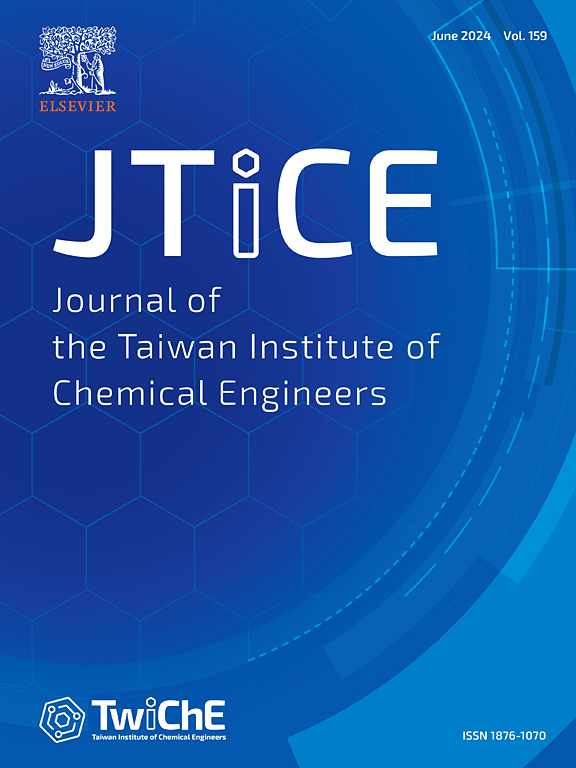Novel Fe2O3@MoS2 nanofibers with significantly enhanced peroxymonosulfate activation by piezoelectric effect for organic pollutant degradation
IF 5.5
3区 工程技术
Q1 ENGINEERING, CHEMICAL
Journal of the Taiwan Institute of Chemical Engineers
Pub Date : 2025-01-24
DOI:10.1016/j.jtice.2025.105990
引用次数: 0
Abstract
Background
α-Fe2O3 is a promising activator of peroxymonosulfate (PMS) to degrade organic pollutants but is heavily limited by the inevitably sluggish conversion rate of Fe3+ to Fe2+.
Methods
This work presents a type II heterojunction of MoS2 nanosheets decorated on Fe2O3 (Fe2O3@MoS2, FM) nanofibers for significantly enhanced activation of PMS to effectively degrade various contaminants. FM fibers were facilely prepared by hydrothermal growth of MoS2 nanosheets with 1T and 2H mixed phases on hollow electrospun Fe2O3 nanofibers.
Significant findings
The MoS2 nanosheets are separated with each other with intact heterojunction interface with Fe2O3 nanofibers. By applying an sonication (US), the transfers of piezoelectric e- and Mo4+ from MoS2 to Fe2O3 are significantly accelerated by the piezoelectric field inside the MoS2 nanosheets. As a result, a large amount of Fe2+ is produced as activator of PMS to achieve a superior degradation performance of RhB solution by FM with a kinetic constant of 1.2639 min-1. The scavenger degradation and electron spin resonance (ESR) experiments demonstrate that 1O2, ·O2-, e-, SO4·- and ·OH contribute to the degradation process under the PMS/US. Meanwhile, the PMS is demonstrated to be the source to generate the reactive species mainly activated via Fe2+ reduced by Mo4+ and piezoelectric e-. The aggregation of the nanostructures can be effectively avoided due to the unique fibrous structures.

求助全文
约1分钟内获得全文
求助全文
来源期刊
CiteScore
9.10
自引率
14.00%
发文量
362
审稿时长
35 days
期刊介绍:
Journal of the Taiwan Institute of Chemical Engineers (formerly known as Journal of the Chinese Institute of Chemical Engineers) publishes original works, from fundamental principles to practical applications, in the broad field of chemical engineering with special focus on three aspects: Chemical and Biomolecular Science and Technology, Energy and Environmental Science and Technology, and Materials Science and Technology. Authors should choose for their manuscript an appropriate aspect section and a few related classifications when submitting to the journal online.

 求助内容:
求助内容: 应助结果提醒方式:
应助结果提醒方式:


